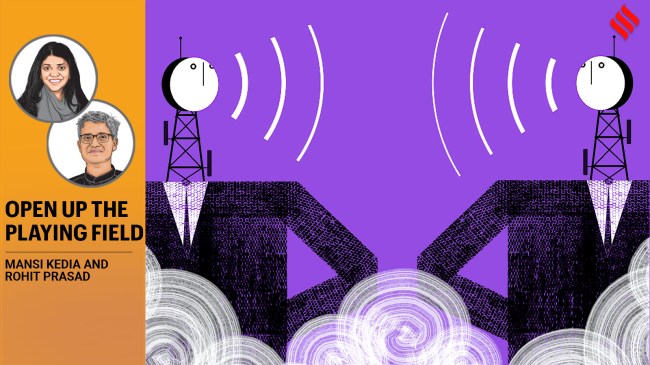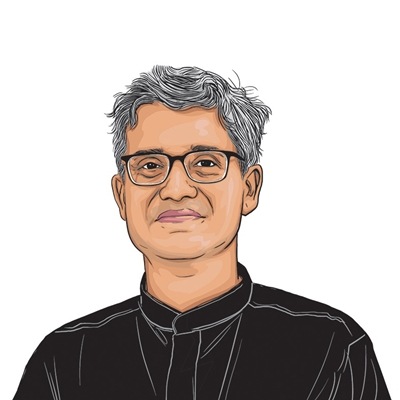Opinion How will the Telecommunication Act impact competition, tech neutrality in India?
The sustained growth of India’s telecom industry sits at the centre of India’s digital revolution. This time it cannot be case of so near, yet so far
 The emphasis on Right of Way in the provisions of the new Act, acknowledges this need as well. Besides creating an enabling business environment that lowers cost for business, investing in fibre infrastructure will require a significant amount of resource generation for both urban and rural areas. C R Sasikumar
The emphasis on Right of Way in the provisions of the new Act, acknowledges this need as well. Besides creating an enabling business environment that lowers cost for business, investing in fibre infrastructure will require a significant amount of resource generation for both urban and rural areas. C R Sasikumar The Telecommunication Act 2023, replaces the hoary Telegraph Act 1885 and the Wireless Telegraphy Act 1933. Through these years, as technology evolved, service providers entered and exited, and communications changed from voice to data, the Telegraph Act stood tall, albeit through a series of amendments and intermittent policy reforms. The life span of this new Act may not be as long, but it will need to see through the next few generations of communications technology including a multitude of innovations spanning human-human (voice calls, messaging, video calls), human-machine (wearables), and machine-machine (Industry 4.0) communications. The use of computing and other complementary technologies such as artificial intelligence, internet of things, and quantum computing, will become inseparable from communications technology.
The Act has introduced several vital changes, though not without the contested provisions for safety standards and public emergencies which give the government unfettered power that can infringe on citizen privacy with little or no accountability for governing officers. The positive changes — providing flexibility for allocation of spectrum, mechanisms for improving right of way and building common ducts and cable corridors, expanding the application of USOF (now Digital Bharat Nidhi) and improving fund utilisation — are certainly steps in the right direction. In this piece we focus on two important, and perhaps overlooked objectives: (i) The promotion of competition and (ii) resource mobilisation for infrastructure upgrade in a debt laden industry.
On 5G, India, like most other countries, is stuck in a vicious cycle of unattractive use cases, poor monetisation and underinvestment in infrastructure. The publicly committed capex of Rs 42,000 and Rs 33,000 crore for 2023-24 by Reliance Jio and Bharti Airtel respectively, is driven by their roll out targets, after which both companies are expected to substantially lower capex, between 30-40 per cent of previous year’s levels. Investments in 5G start-ups have shrunk from $639 million in 2022 to $134.1 million in 2023. One of the reasons cited by venture capitalists was the limited availability of 5G connectivity beyond the metros. Opening up the market to new players and improving competition can attract more investments and consequently innovation in the industry.
The Act’s section on Powers of Authorisation and Assignment rightly provides for technology neutrality of spectrum use, but does not reflect the same in the delivery of communication services. Telecom services are no longer distinguishable by technology type. A combination of technologies can be used to deliver voice and data services. It is important that any new player in the services market has non-discriminatory and non-exclusive access to infrastructure on a commercial basis for it to compete against integrated entities. In the new Act, the spirit of infrastructure unbundling that is manifest in the section on right of way for facilities providers needs to find expression in the section on authorisations. The aim should be to facilitate what is referred to in the literature as equivalence of inputs (products and processes offered to competitors at the same terms as to the operator’s own retail arm) and/or equivalence of outputs (products and services offered by the operator to its own retail business and to other operators, are functionally comparable). What we are pointing towards is merely the old idea of functional separation that was first brought up in the Communications Convergence Bill of 2001.
Functional separation has been used as a regulatory remedy by many countries to address market concentration. Some common examples include Sweden, UK, Australia, Ireland and Poland. However, no regulation is without risk. The remedies when disproportionate can lead to counterproductive outcomes including lower investments and lower innovation. Voluntary transitions, as implemented by Italy, always work better for infrastructure industries served by incumbents. When incentivised through lower taxation or other fiscal benefits, we expect to see the industry settle into a range of configurations from fully integrated telcos to network aggregators and pure play service providers.
Further, for India to move to high quality digital applications, it has to lend itself to multiple technology configurations and transition from wireless to a wireline led architecture. The emphasis on Right of Way in the provisions of the new Act, acknowledges this need as well. Besides creating an enabling business environment that lowers cost for business, investing in fibre infrastructure will require a significant amount of resource generation for both urban and rural areas. The government through the USOF, should also contribute through explicit targets for infrastructure buildout in rural and non-rural areas, while creating a competitive space for investments by the private sector.
Finally, just as this Act has integrated two acts whose separation had become superfluous, the siloed view of telecommunications and internet will soon become inhibiting. Regulatory convergence is no longer a new idea for digital technologies, telecommunications and broadcasting. TRAI’s Consultation paper of January 2023, raised the challenge of fragmented oversight over converged services. It asked questions on the efficacy of separate licences and distinctive administrative departments to handle converged services. In a world where the functional distinction between telcos and over-the-top services is blurring, with the two playing both complementary and competitive roles with respect to each other, an integrated view is essential. Adding broadcasting to the mix is also important. A unified vision of the government of India should bring synergies in licensing, standards, skilling and governance across different departments.
The sustained growth of India’s telecom industry sits at the centre of India’s digital revolution. Unleashing competition in services and facilitating the transition to fibre-based networks, while promoting technology dynamism are lodestars for the new era ushered in by the Telecommunications Act, 2023. This time it cannot be a case of so near, yet so far.
Kedia is Senior Fellow, ICRIER and Prasad is Professor, MDI Gurgaon. Views are personal





